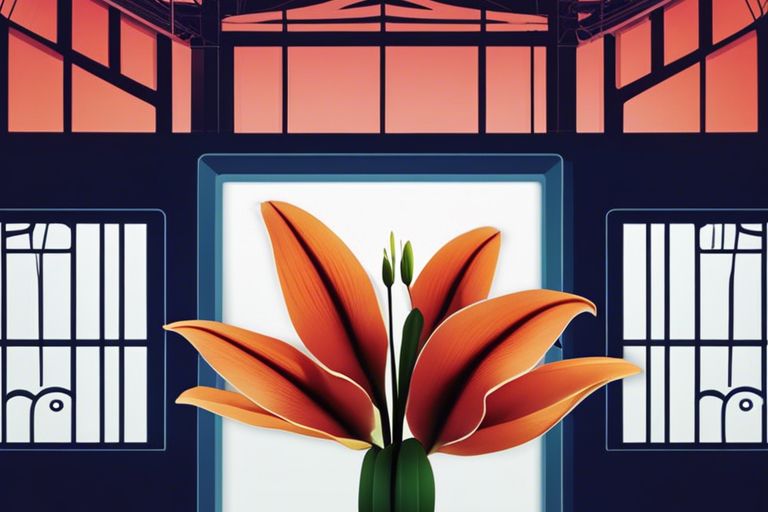Houseplants can add beauty to our homes, but for cat owners, it’s crucial to be aware of the dangers some plants pose to our feline friends. Lilies are considered the most toxic house plant for cats, particularly true lilies such as Easter lilies, tiger lilies, and Asiatic lilies. Even small ingestions, such as licking the pollen off their fur or drinking the water from a vase, can lead to severe kidney failure in cats, potentially resulting in death if not treated promptly. If you have cats, it’s crucial to keep lilies out of your home to ensure the safety of your beloved pets.
Key Takeaways:
- Lilies are the most toxic house plants for cats, causing kidney failure even from minimal exposure.
- Peace Lilies, Pothos, and Philodendron are common house plants that are toxic to cats and can cause gastrointestinal issues if ingested.
- It is crucial for cat owners to research and ensure that any house plants they bring into their home are safe for their feline companions to prevent accidental poisoning.

Identifying Toxic House Plants for Cats
The Danger of Lilies
One of the most toxic house plants for cats is the lily. Even a small ingestion of lily petals, leaves, or even the water from the vase can lead to severe kidney damage in cats. It is crucial to keep all varieties of lilies out of reach of your feline friends to avoid any potential poisoning incidents.
Sago Palm Toxicity
One of the deadliest house plants for cats is the Sago Palm. The entire plant, from the seeds to the leaves, can be extremely toxic to cats if ingested. Even small amounts can lead to symptoms such as vomiting, diarrhea, jaundice, seizures, and even liver failure, which can be fatal if not treated promptly.
Another dangerous aspect of Sago Palm toxicity is that there is no specific antidote for it. Treatment for Sago Palm poisoning in cats involves supportive care to address symptoms and prevent further complications. If you suspect your cat has ingested any part of a Sago Palm, seek immediate veterinary attention.
Symptoms of Plant Poisoning in Cats
Once again, it is crucial for cat owners to be aware of the potential dangers that certain house plants can pose to their feline companions. Recognizing the symptoms of plant poisoning in cats is crucial for prompt treatment and a successful outcome.
Clinical Signs to Watch For
Signs of plant poisoning in cats may include vomiting, diarrhea, lethargy, lack of appetite, drooling, difficulty breathing, and changes in urination or defecation habits. In severe cases, cats may experience tremors, seizures, or collapse. It is important to monitor your cat closely for any unusual behavior or symptoms, especially if you suspect they have ingested a toxic plant.
When to Seek Veterinary Care
Any cat showing symptoms of plant poisoning should be taken to the veterinarian immediately. Time is of the essence in these situations, and early intervention can make a significant difference in the outcome. Plus, some toxic plants can cause irreversible damage or even be fatal if not treated promptly.
Prevention and Safety Measures
Safe Alternatives to Toxic House Plants
Despite the allure of certain house plants, it is important to prioritize your cat’s safety. Consider cat-friendly alternatives such as cat grass, catnip, or mint in your home. These plants not only provide a safe and enjoyable environment for your feline friend but also add a touch of greenery to your space.
Tips for Creating a Cat-Safe Home Environment
Measures need to be taken to ensure your home is cat-safe. Place all toxic plants out of reach of your cat. Opt for hanging plants or secured shelves to prevent access. Invest in pet-friendly plants that are safe for cats. Additionally, provide plenty of cat-friendly toys and activities to keep your pet entertained and away from harmful plants. Assume that cats are curious creatures and will explore their environment extensively.
- Avoid toxic plants that are harmful to cats.
- Secure toxic plants out of reach.
- Provide safe alternatives for your cat to enjoy.
- Assume that cats are curious creatures and will explore their environment extensively.
Summing up
Considering all points discussed, it is clear that lilies are the most toxic house plant for cats. Their ingestion can have severe consequences for feline health, including kidney failure and even death. Therefore, it is crucial for cat owners to be aware of this danger and ensure that lilies are kept out of their homes to protect their furry companions. Always opt for cat-friendly plants to create a safe environment for your pets.
FAQ
Q: What is the most toxic house plant for cats?
A: The most toxic house plant for cats is the lily plant. All parts of the lily, including the petals, leaves, stems, and even the pollen, are extremely poisonous to cats and can lead to severe kidney failure if ingested.
Q: How can I identify if a plant is toxic to cats?
A: To identify if a plant is toxic to cats, you can refer to the ASPCA’s website, which provides a comprehensive list of plants that are toxic to cats. Additionally, look for warning signs such as drooling, vomiting, diarrhea, lethargy, or difficulty breathing in your cat if you suspect they may have ingested a toxic plant.
Q: What should I do if my cat ingests a toxic house plant?
A: If you suspect that your cat has ingested a toxic house plant, contact your veterinarian or a pet poison helpline immediately. Be prepared to provide information about the plant ingested, the amount, and the time of ingestion. Do not wait for symptoms to appear as immediate treatment may be necessary to save your cat’s life.
